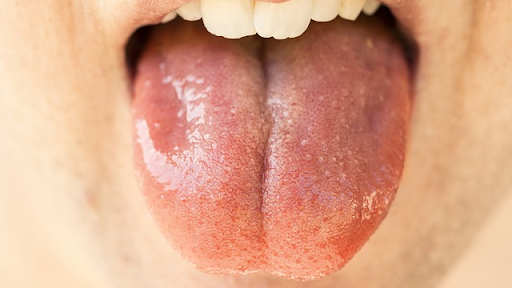In recent years, vaping has evolved rapidly, not just in technology, but in the vast array of experiences it offers. Central to this evolution has been the incredible diversity of e-liquid flavors. From the familiar tobacco and menthol to the more exotic and gourmet flavors like crème brûlée, dragon fruit, and even bacon, the world of vaping flavors seems almost limitless. This burgeoning palette doesn’t just reflect a market-driven demand, but speaks to the relationship between taste sensation and personal experience.
This article explores the science and sensation of vaping flavors, focusing on how they interact with our taste receptors and why, intriguingly, different individuals might experience the same flavor in entirely different ways.
The Basics of Taste and our Taste Buds
Our sense of taste, a key facet of the human sensory experience, is facilitated by intricate taste receptors predominantly located on the tongue. These receptors, housed within taste buds, are responsible for detecting and interpreting the five fundamental taste sensations: sweet, salty, sour, bitter, and umami (often described as a savory taste, like that of broths or cooked meats). Contrary to popular belief, our tongue isn’t divided into distinct zones for each taste; instead, while certain areas may be slightly more sensitive to specific tastes, all regions have a mix of taste bud types. This complex system ensures a multi-dimensional taste experience, allowing us to discern a wide variety of flavors from the foods and substances we consume.
Creation of Vape Flavors
E-liquids, often referred to as vape juices, form the foundation of the vaping experience and are composed of a few key ingredients: propylene glycol (PG), vegetable glycerin (VG), nicotine, and various flavorings. PG serves as a delivery medium for the nicotine and adds to the ‘throat hit’, while VG, thicker in consistency, produces the visible vapor when exhaled and often adds a slightly sweet undertone. The nicotine content can vary based on user preference, ranging from nicotine-free solutions to high-strength options. However, it’s the vape flavors– be they natural or artificial – that truly diversify the vaping experience. Flavor artisans meticulously craft e-liquids, from singular, clear notes like fresh apple or mint to elaborate blends that recreate complex tastes, like a slice of tiramisu or a tropical cocktail. The flavor experience in vaping isn’t just determined by the e-liquid alone. The temperature at which the liquid is vaporized, dictated by device specifications and user settings, can enhance or mute certain notes in the vape flavors, making the same e-liquid taste differently across different devices or wattage settings.
Interaction Between Vaping Flavors and Taste Receptors
The sensation of taste while vaping arises from the interplay between e-liquid flavor compounds and our taste receptors. As the vaporized e-liquid makes contact with the tongue, the flavor molecules bind to and stimulate the receptors, much like how food and drink do, eliciting familiar sensations such as sweetness or bitterness. However, flavor perception in vaping isn’t solely a result of taste; it’s intimately tied to our sense of smell, or olfaction. As we inhale vapor, aromatic molecules travel up the nasal passage to the olfactory bulb, enriching the flavor profile. For many vapers, flavors are often more discerned by their aroma than their taste, making the olfactory contribution indispensable. Beyond taste and smell, vaping introduces another dimension to flavor perception: the ‘throat hit’. This refers to the slight, often desired, irritation or tingling sensation at the back of the throat. Predominantly caused by nicotine and the PG content in e-liquids, a throat hit can enhance the sensation of certain flavors, especially those mimicking traditional tobacco, offering a more rounded and authentic experience.
Factors that Affect Individual Flavor Perception
Genetic makeup plays a significant role, with some individuals, termed “supertasters,” possessing a heightened density of taste buds, leading to amplified taste sensations, while others might have a diminished palate. External influences also weigh in; for instance, the flavor of a vape can be influenced by the lingering aftertaste of a recent meal or beverage. There’s the phenomenon of sensory adaptation: repeated and prolonged exposure to a particular flavor can result in its diminished intensity, much like how one might become “nose-blind” to a consistent aroma. As we age, our taste and smell receptors undergo changes, and factors like health conditions, medications, or even hormonal fluctuations can all subtly alter how we perceive flavors in our everyday experiences, including vaping.
Common Vaping Preferences
The diverse world of vaping flavors caters to an equally diverse range of palates, and understanding why certain flavors resonate with some while being repulsive to others can be quite the enigma. A segment of vapers gravitates towards sweet and creamy profiles, possibly reflecting an innate human inclination for calorie-rich foods and the comforting tastes of childhood desserts. On the other hand, those transitioning from traditional smoking may find solace in tobacco or menthol flavors, seeking a semblance of the familiar. Cultural and individual experiences significantly mold our flavor inclinations; for example, someone raised in a region with spicy cuisine might be more receptive to spicy vape flavors. Yet, certain flavors might be deemed harsh or off-putting by some, often due to personal aversions developed over time or perhaps from a bad experience. In vaping, the composition of the e-liquid or the device’s settings might accentuate these flavor notes, further highlighting the subjective nature of flavor perception.
Vaping offers a unique intersection of technology, sensory experience, and personal preference. As we’ve explored, various factors from genetics to cultural upbringing play a role in shaping our flavor experiences, making each individual’s vaping journey distinct. Embracing this diversity and continuously seeking understanding can enhance the vaping experience, inviting users to savor each puff with renewed appreciation.

